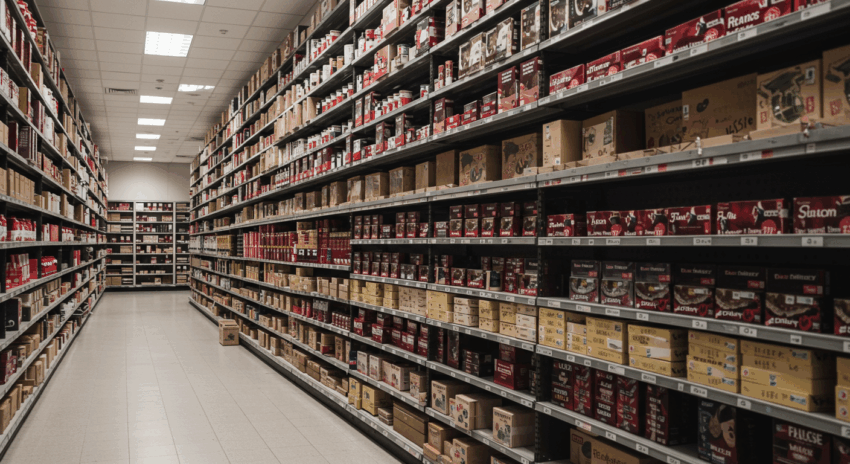The latest US retail sales figures have just been released, and they paint a picture of a more cautious American consumer than many economists anticipated. This isn’t just a dry statistic for Wall Street; it’s a critical signal about the health of the economy that has direct implications for your wallet, your savings, and the cost of borrowing money. In this article, we’ll break down what these numbers mean, why they are so important for the Federal Reserve’s fight against inflation, and how this economic shift could impact your personal financial situation.
Understanding this data is key to making sense of the broader economic landscape. When you hear financial news, it often feels distant and complex, but reports like this one are a direct reflection of our collective behavior as shoppers and savers. Let’s dive into the details and demystify this crucial piece of the economic puzzle.
Deconstructing the Data: What the Retail Sales Report Actually Said
So, what exactly is the retail sales report? Think of it as a monthly report card for consumer spending. It tracks the total sales of goods by retailers across the country, from gas stations and grocery stores to online shops and car dealerships. Because consumer spending is the single largest driver of the U.S. economy (accounting for roughly two-thirds of all economic activity), this report is a vital health check.
The most recent report for May showed a very modest increase of just 0.1%. While any increase might sound positive, this was below the 0.3% growth that economists had predicted. Furthermore, the report included downward revisions to the data from the previous month, April, which was adjusted from flat (0.0%) to a decline of 0.2%. This paints a picture of spending that isn’t just slowing down, but has been weaker than we initially thought.
To understand the trend, it’s helpful to look at the details:
- Areas of Weakness: Sales at furniture stores, building material suppliers, and gasoline stations saw noticeable declines. This suggests that consumers are pulling back on big-ticket home projects and are potentially driving less or benefiting from slightly lower gas prices.
- Areas of Strength: On the other hand, there was strength in sales for sporting goods, hobbies, music, and book stores, as well as a continued rise in online shopping. This indicates a shift in spending priorities rather than a complete halt.
- The Control Group: A key metric economists watch is the “control group” of sales, which excludes volatile items like automobiles, gasoline, and building materials. This figure, which feeds directly into the calculation of the Gross Domestic Product (GDP), actually rose by a solid 0.4%. This suggests underlying strength, even if the headline number looks weak.
In essence, the American consumer is still spending, but they are becoming more selective and budget-conscious, likely feeling the pinch from a period of high inflation and elevated interest rates.

A Double-Edged Sword: Good News for Inflation, A Warning for Growth
Why does a slowdown in consumer spending create such a buzz among financial experts? Because it’s a classic double-edged sword, with both positive and negative implications for the economy.
The Upside: A Powerful Ally in the Fight Against Inflation
For the past couple of years, the Federal Reserve—the central bank of the United States—has been aggressively trying to cool down inflation. Their main tool for this is raising interest rates. Higher interest rates make it more expensive for people and businesses to borrow money for things like mortgages, car loans, and business expansion. The goal is to slow down demand across the economy, giving supply a chance to catch up and easing the upward pressure on prices.
A report showing weaker consumer spending is, in a way, exactly what the Fed wants to see. It’s evidence that their policies are working. When consumers buy fewer goods, businesses have less power to raise prices, which helps bring the inflation rate down. For markets, this data sparked hope that the Fed might be in a position to start cutting interest rates sooner than previously expected. A potential rate cut would make loans cheaper again, which is generally good news for both the stock market and individuals with debt.
The Downside: A Potential Red Flag for Economic Health
While taming inflation is the goal, there’s always a risk that the economy could slow down too much, potentially tipping into a recession. A recession is a significant, widespread, and prolonged downturn in economic activity. Since consumer spending is the engine of the economy, a sharp and sustained drop can be a major warning sign.
If people stop buying things, companies make less money. This can lead to them freezing hiring, laying off workers, and canceling plans for new investments. This creates a negative cycle where unemployed workers have even less money to spend, further weakening the economy. So, while the current slowdown is seen as a positive for inflation, economists and policymakers will be watching closely to ensure this controlled cooling doesn’t turn into a deep freeze. For anyone navigating their career or managing an investment portfolio, understanding this balance is crucial.
What This Means for Your Personal Finances
Economic reports can feel abstract, but their effects ripple down to our daily lives in very tangible ways.
1. The Cost of Borrowing: The biggest takeaway is the potential impact on interest rates. If this trend of slowing spending continues and inflation keeps cooling, the Federal Reserve will feel more confident about cutting its benchmark interest rate. This would eventually lead to lower rates on:
- Mortgages and home equity loans
- Auto loans
- Credit card Annual Percentage Rates (APRs)
2. The Job Market: The health of the consumer is directly linked to the health of the job market. While the job market is currently strong, a continued pullback in spending could cause businesses to become more cautious about hiring. If you are job hunting or considering a career change, it’s wise to keep an eye on broader economy trends.
3. Your Savings and Investments: For savers, lower interest rates would mean slightly lower returns on high-yield savings accounts and CDs. For investors, the reaction is more complex. The stock market often cheers for data that could lead to rate cuts, but it’s also wary of the recession risk that a spending slowdown implies. This can lead to market volatility, emphasizing the importance of a diversified and long-term investment strategy.
Ultimately, this retail sales report is a single, important snapshot in a much larger movie. It confirms that the economic landscape is shifting, and consumers are adapting to a new financial reality. By understanding these shifts, you can make more informed decisions and better prepare for what’s ahead.
Frequently Asked Questions (FAQ)
Q: Does this weak retail sales report mean prices for goods will start to fall?
A: Not necessarily. A slowdown in spending helps to combat inflation, which is the rate at which prices are increasing. So, instead of prices rising by 4% per year, they might only rise by 2%. It doesn’t typically mean widespread price drops (which is called deflation and is often a sign of a very weak economy). However, you might see more discounts and promotions from retailers as they compete for fewer consumer dollars.
Q: How is “retail sales” different from “overall consumer spending”?
A: This is a great question. The retail sales report primarily tracks spending on goods—things you can physically touch, like cars, clothes, and electronics. Overall consumer spending, often measured by Personal Consumption Expenditures (PCE), is a broader metric. It includes spending on both goods and services, such as rent, healthcare, haircuts, and streaming subscriptions. Since services make up a large part of the modern economy, economists look at both reports to get a complete picture of consumer health.



